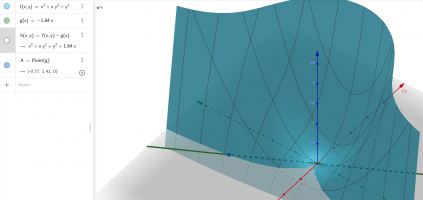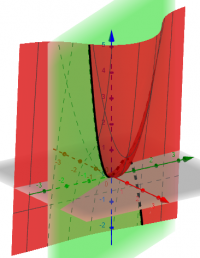pineapplewithmouse
Junior Member
- Joined
- Jun 22, 2021
- Messages
- 63
I have the function f(x,y)=x^3+xy^2+y^2 and g(x)=-1.84x. I want to find where they are intersecting.
Apparently I need to use something that's called "numerical methods" which seems very difficult and confusing.
I tried to see it on geogebra but for some reason I can't see the exact intersections, but I can see their approximate coordinates, which is not enough.
Is there a method that I can use to get an answer?
The approximate coordinates that I got:
(-0.77, 1.41, 0)
(0.03, -0.06, 0)
(-0.04, 0.08, 0)
Apparently I need to use something that's called "numerical methods" which seems very difficult and confusing.
I tried to see it on geogebra but for some reason I can't see the exact intersections, but I can see their approximate coordinates, which is not enough.
Is there a method that I can use to get an answer?
The approximate coordinates that I got:
(-0.77, 1.41, 0)
(0.03, -0.06, 0)
(-0.04, 0.08, 0)



